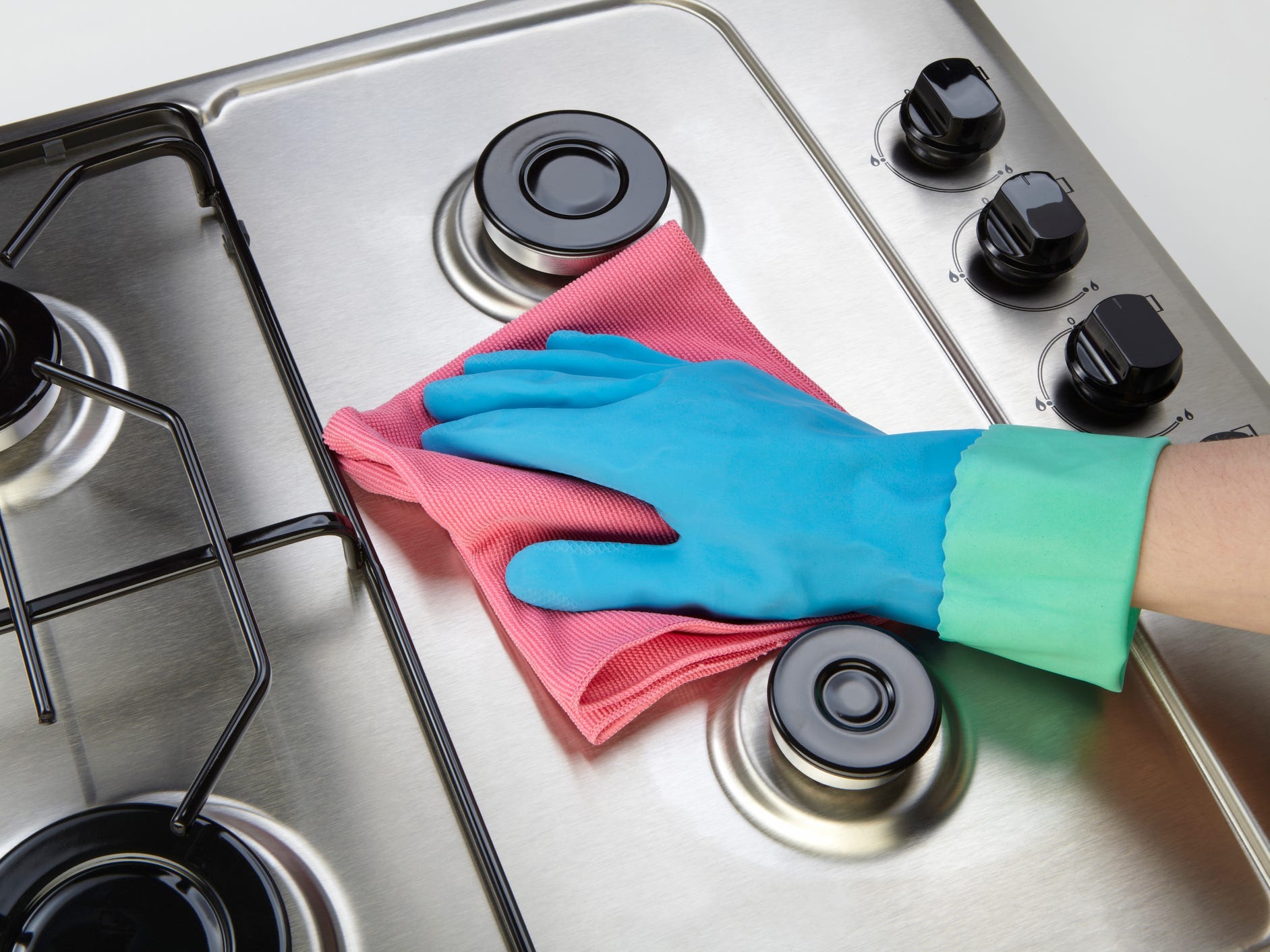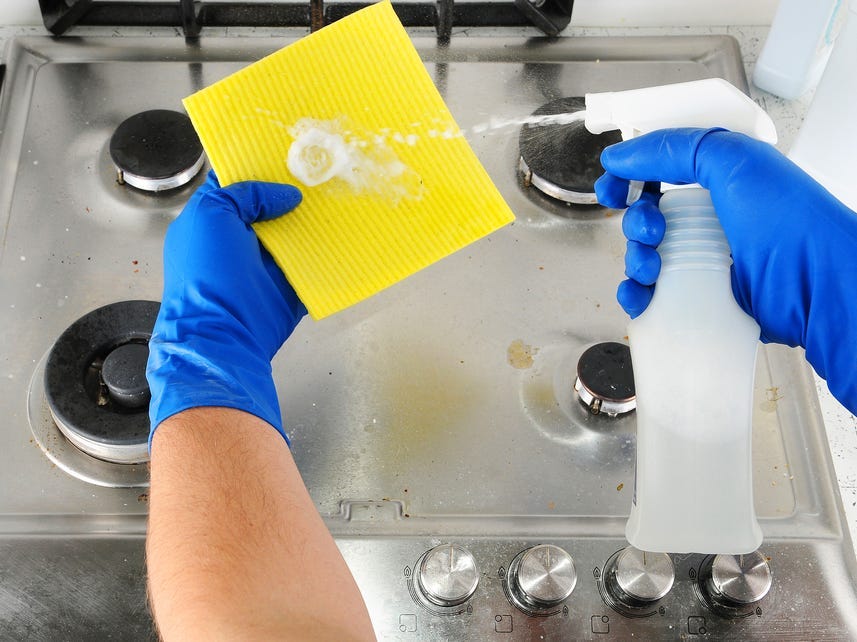
Grace Cary/Getty Images
- Warm soapy water works best to clean stainless steel.
- Avoid harsh chemicals like bleach and ammonia, as well as abrasive materials.
- To achieve a sleek finish, apply a little bit of olive oil onto a microfiber cloth and buff until shiny.
- Visit Insider's Home & Kitchen Reference library for more stories.
Stainless steel is both elegant and durable, making it a popular choice for appliances, fixtures, and everything in-between. However it does require regular cleaning to remove fingerprints, dust, and dirt, and keep it looking brand new.
Lauren Bowen, director of franchise operations at Two Maids & A Mop, explains that while the cleaning method you use will depend on the kind of mess, you should be sure you're polishing major appliances biweekly or as needed.
Bowen and Vera Peterson, president of Molly Maid, share their tips on how to maintain stainless steel, and keep it looking like you just brought it home from the store.
Before you clean
Before delving into the actual methods, there are a few tips to keep in mind that will help preserve the integrity and beauty of stainless steel.
- Check your owner's manual first. The company that made the item best knows how to clean and care for it. Those instructions take precedence over any other directions.
- Use a soft cloth. Peterson says that microfiber is ideal. She is adamant that you should never use steel wool or a scouring pad, since these materials can scratch the surface.
- Don't use harsh, abrasive chemicals. Ammonia, bleach, and other strong cleaning chemicals can damage your stainless steel.
Dish soap method

xefstock/Getty Images
Both Peterson and Bowen recommend the use of dish soap as the best way to clean stainless-steel appliances and cookware.
"This method is quick, simple, and best for grimy stainless-steel cookware," Bowen says, explaining that this is especially good for stainless steel that needs degreasing or has a lot of food residue.
Begin by filling the sink with warm water and adding a squirt of dish soap. Soak the stainless steel in soapy water for at least five minutes. Then wipe down the surfaces with a microfiber cloth, making sure to wipe in the direction of the metal grain to avoid scratches or damage.
Your larger appliances won't fit in a sink and shouldn't be submerged in water. You also need to clean stainless-steel faucets and other types of fixtures. Peterson recommends cleaning other types of stainless steel by mixing warm water and a few drops of dish soap in a small spray bottle. Then spray the solution on the stainless steel, and wipe the mixture off (in the direction of the grain) with a microfiber cloth. Dip the microfiber in a small amount of mineral, coconut, or olive oil, and apply to the stainless steel to brighten the shine. Peterson stresses you don't need a lot of oil to create a nice shine.
Vinegar method
If you have oily fingerprints and food grime on stainless-steel appliances and fixtures (regardless of size), Peterson recommends using vinegar to remove both. "Vinegar is all-natural, non-abrasive, and acts as an effective sanitizer," she says.
First fill a spray bottle with equal parts water and white vinegar. If you want to make the vinegar solution smell better, Peterson recommends adding a few drops of lemon juice. Shake the bottle well and spray the mixture on the stainless steel surfaces you want to clean. Wipe everything down with a soft microfiber cloth, making sure to follow the direction of the grain. Exercise a gentle touch here - there's no need to scrub too hard because vinegar should effortlessly cut through the grease.
Wet a second cloth with water and apply a few drops of dish soap. "This removes the acidic residue that vinegar leaves behind to ensure it doesn't interact poorly with the metal over time," Peterson says. Rinse out the soapy cloth and wipe the stainless steel again to remove any remaining soap. Finally apply a small amount of olive oil to a third soft cloth and wipe the appliances one last time to gently seal the grain.
How to polish stainless steel

Spok83/Shutterstock
Bowen says that club soda is "best for polishing already clean stainless steel to add sparkle and shine."
To use it, pour some club soda into a spray bottle and apply it to the appliance or cookware. Then rub in the direction of the grain with a microfiber cloth. Rinse with warm water if needed, and dry completely.
Insider's takeaway
There's no shortage of articles floating around on numerous ways to clean stainless steel, and Bowen says it all depends on the job at hand. "Greasy cookware? Dish soap is best," she says. "Want a bit of sparkle on your refrigerator? Club soda is the go-to item."
Generally stainless steel can be cleaned using soap and water, so soak pots and pans in the soapy water. For items that are too large to fit in the sink - or aren't waterproof - a spray bottle full of warm soapy water and a microfiber cloth can be used to clean them. Avoid using hard chemicals like bleach and ammonia, and always wipe in the direction of the grain.
